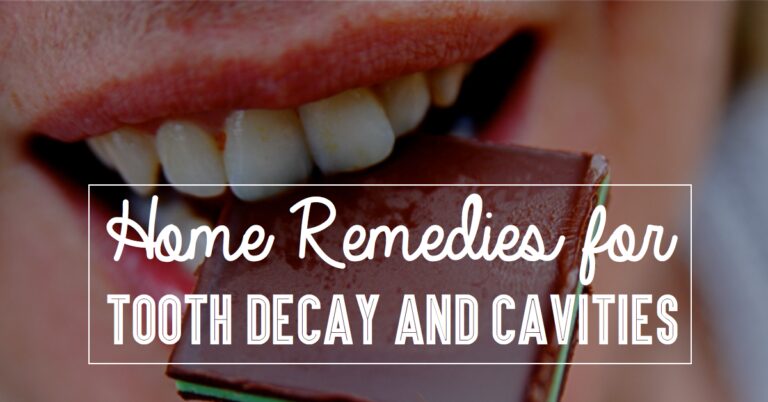Tooth decay is a gradual destruction of the hard tissues that cover the teeth. It is a very common disease in children and young people, being the main cause of tooth loss. In the mouth, several bacteria are housed that are responsible for transforming food, especially starches and sugars, into acids. These corrode the tooth enamel producing damage on the surface.
At first, decay does not hurt, unless it becomes large and deep. If you do not receive treatment early, it can decay till nerve of the tooth and become very painful. The conventional treatment of all dentists is invasive and has chemical substances that can be dangerous for health. There are several recipes and home remedies that promise an immediate solution.
There are several home remedies or natural cures, these consist of antibiotic plants that fight against the infection of the gums and teeth, plants rich in vitamin C, magnesium, gold and flavonoids that allow to strengthen the teeth and improve the circulation of blood to gums, astringent plants that stop the bleeding of the gums and sialagogas plants that stimulate the production of saliva also help in recovery.
Plants against Cavities
Garlic and Onions
The sulfur compounds of garlic and onions improve gum blood circulation and have a strong antibiotic effect. It should be taken in the diet, preferably raw or undercooked.
Cardamom
Cardamom is an ideal plant for all ailments that affect the digestive system. It has cineol, an antibiotic principle that cleans teeth and protects against plaque formation. It also stimulates salivation, which defends teeth naturally.
Cumin
It has antimicrobial properties capable of combating bacterial plaque. It is used in many cultures to prevent tooth decay and gingivitis.
Clove
Due to its richness in eugenol and essential oils, it is suitable for treating cavities and inflammation of the gums. Clove oil, combined with zinc oxide, forms a compound called zinc eugenlate, a kind of paste used by dentists to fill in the dental cavities produced by caries and in numerous stemmatological uses, such as anesthetic pain reliever, oral disinfectant.
Stevia
It contains almost 30 antibacterial components, most of them belonging to the group of terpenes, suitable for the treatment of certain diseases of the teeth and mouth, such as caries, gingivitis, or mouth ulcers. The custom that some people of certain countries have for chewing the leaves of stevia as a sweetener seems to protect them from the appearance of this type of anomalies.
Eucalyptus
Its active property as an antibiotic against bacterial plaque, also has principles that deflate the gums.
Ginger
This is one of the best antibacterial, anti-inflammatories and plant analgesics. The ingestion of this food reduces inflammations of the gums and mitigates the pain of the tooth.
Mint
Many dentifrices contain menthol because this component, besides disguising the bad smell of mouth, is able to stimulate the production of saliva, since the mouth is or xerostomia is one of the main causes that produces not only bad mouth odor but also problems of caries and gingivitis. Menthol also has antibiotic properties.
Green Tea
Green tea is rich in tannins, astringent properties cure bleeding gums. Due to its anti-bacterial properties, it is suitable to eliminate bad breath and protect the mouth against infections that produce inflammation. It has also been shown that green tea reduces the production of amylase, a substance in saliva that transforms the remains of carbohydrates into simple sugars.

